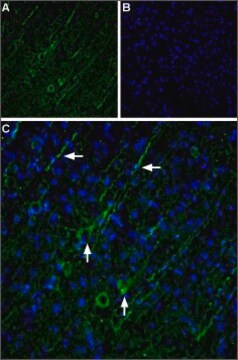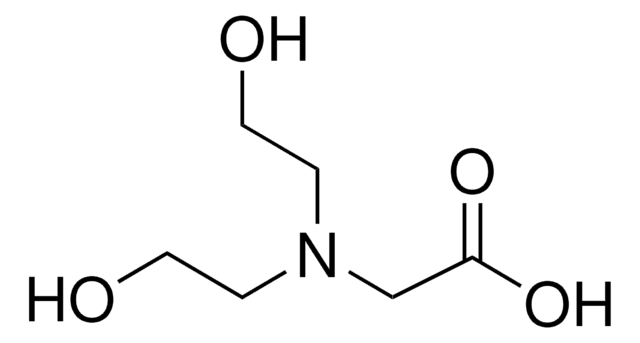T0377
Tricine
≥99% (titration)
Synonym(s):
N-[Tris(hydroxymethyl)methyl]glycine
About This Item
Recommended Products
Assay
≥99% (titration)
form
crystalline powder
useful pH range
7.4-8.8
pKa (25 °C)
8.1
mp
187 °C
solubility
water: 0.25 g/mL, clear, colorless
application(s)
diagnostic assay manufacturing
SMILES string
OCC(CO)(CO)NCC(O)=O
InChI
1S/C6H13NO5/c8-2-6(3-9,4-10)7-1-5(11)12/h7-10H,1-4H2,(H,11,12)
InChI key
SEQKRHFRPICQDD-UHFFFAOYSA-N
Looking for similar products? Visit Product Comparison Guide
General description
Application
- to prevent precipitation of salts during autoclaving of Emiliania huxleyi cultures
- as a component of buffer A for the homogenization of samples like Caenorhabditis elegans, Drosophila, and plants
- as a component of fresh assay buffer to measure serum melatonin by radioimmunoassay
Storage Class Code
11 - Combustible Solids
WGK
WGK 3
Flash Point(F)
Not applicable
Flash Point(C)
Not applicable
Personal Protective Equipment
Certificates of Analysis (COA)
Search for Certificates of Analysis (COA) by entering the products Lot/Batch Number. Lot and Batch Numbers can be found on a product’s label following the words ‘Lot’ or ‘Batch’.
Already Own This Product?
Find documentation for the products that you have recently purchased in the Document Library.
Customers Also Viewed
Protocols
This procedure may be used for Collagenase products.
Our team of scientists has experience in all areas of research including Life Science, Material Science, Chemical Synthesis, Chromatography, Analytical and many others.
Contact Technical Service






![N-[3-(2-Furyl)acryloyl]-Leu-Gly-Pro-Ala](/deepweb/assets/sigmaaldrich/product/structures/805/876/96b5fb57-71c8-4c6b-b5d2-fafe7374cd85/640/96b5fb57-71c8-4c6b-b5d2-fafe7374cd85.png)

